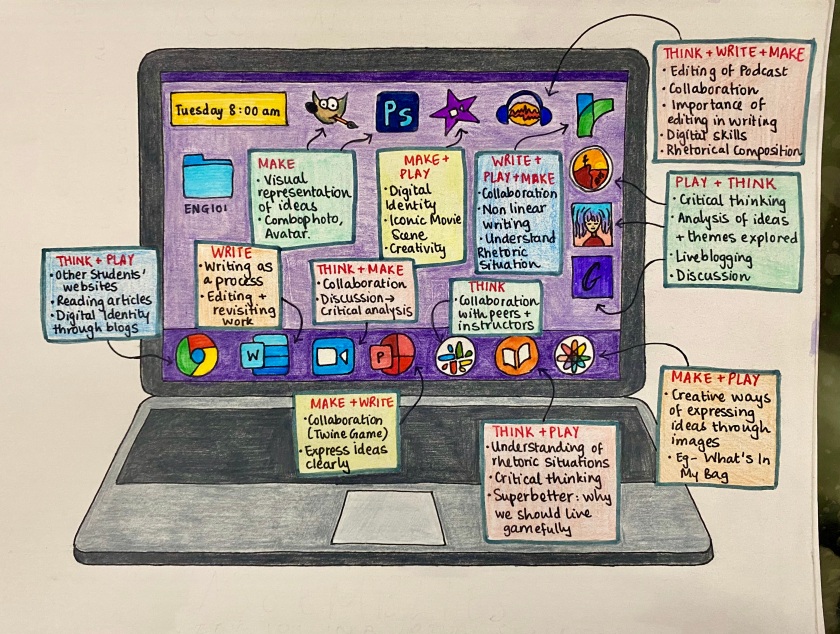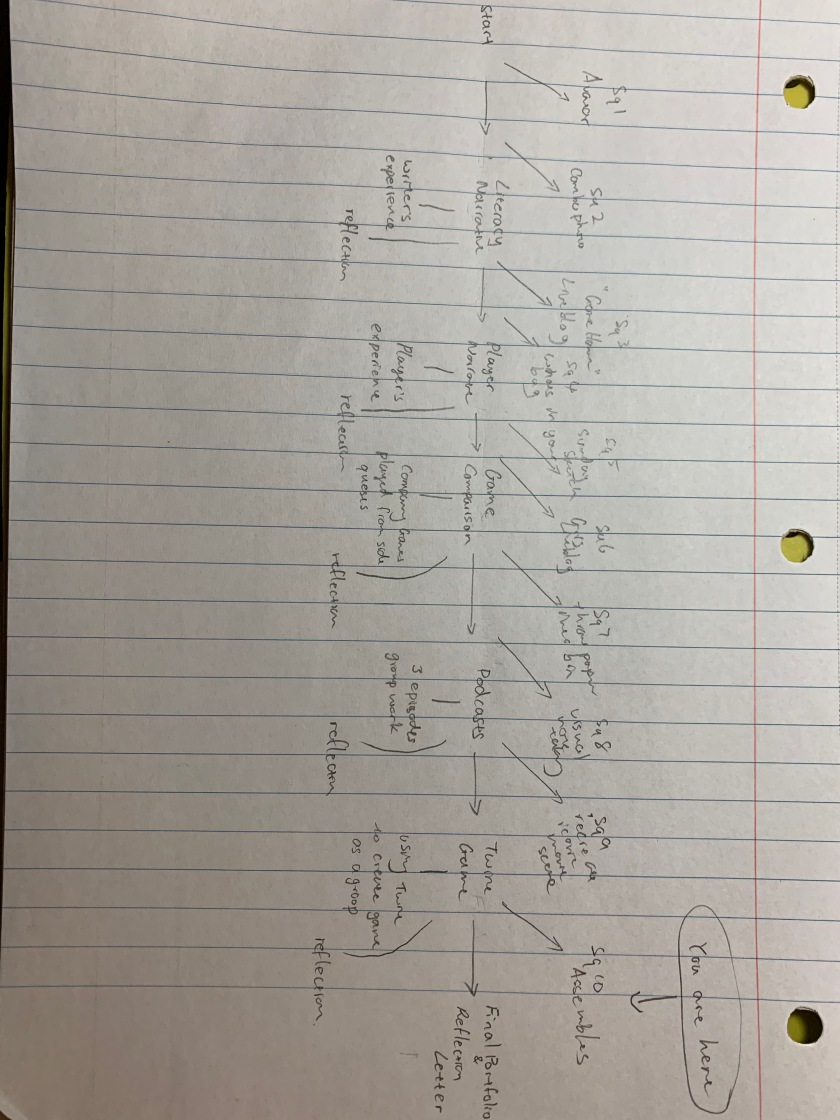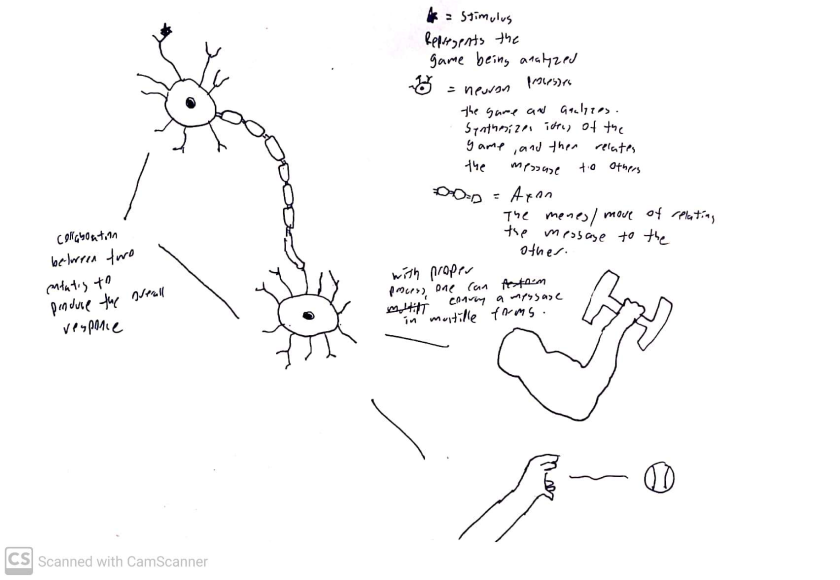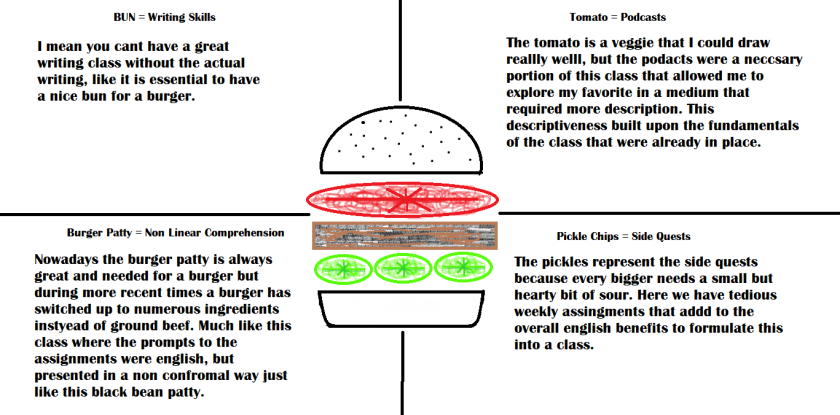Assemblies

Tea is something that I drink a lot, so this is my take on what makes ENG 101 a good class as ingredients of tea-
- Tea leaves- the most important component, it’s the major assignments we had like the literacy narrative and the game comparison essay
- Water- the 2nd most important component, it is the many reflection posts we did for class
- Milk- the readings we had to do for class which taught us the importance of games and how people try to get over trauma through playing games
- Cardamom – the side quests that we had to do for each week where we sometimes had to get creative in order to do them
- “Masala”- this is something that almost all Indian tea lovers put in their tea, it just makes tea even more lovable. This would be the podcasts and twine games we did that made this class even more enjoyable.
- Cup- the class itself, ENG 101 taught by Professor David E Morgen









